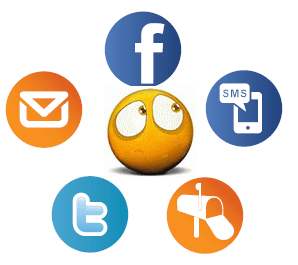 There is no argument as to whether or not social media generates awareness, but is it the best channel to provoke an action from the consumer? He we will discuss a new study that found two thirds of consumers have made a purchase as a result of email, which is nearly double the amount after receiving marketing messages delivered via Facebook.
There is no argument as to whether or not social media generates awareness, but is it the best channel to provoke an action from the consumer? He we will discuss a new study that found two thirds of consumers have made a purchase as a result of email, which is nearly double the amount after receiving marketing messages delivered via Facebook.
Social Media continues to rapidly grow in the business world with Facebook fan pages, company Tweets, and now Pinterest for product display/awareness. It has been established that these pathways of communication are highly beneficial for brand awareness and providing instant updates on deals and promotions, but with the smart phone audience email acts in the same manner. To find which pathway consumers preferred to receive their marketing messages in ExactTarget conducted a channel preference survey, which revealed how people wish to receive advertising.
Even in the initial phases of the study it was apparent that consumer preferences vary by a great deal when communicating with friends and brands. This may seem like blatantly obvious information but this notion is largely dependent upon age. Less than half respondents ages 15-34 prefer to use emailing for personal communication while the 35+ crowd had email as a staple for messaging friends.
Age becomes less of a factor when considering which pathway to receive permission-based promotional messages. 77% of respondents preferred promotional messages through email while only five percent said they would favor social media for ads. One key factor that was discovered here is that although teens (15-17) were extremely active in social media, 66% still chose to receive their permission-based promotions through email. It seems the teens look to social media mainly to perform its original function, which is to connect with peers.
Key Research Points:
• 91% of people use email daily while only 57% engage in Facebook on a daily basis
• 66% of people have made a purchase after receiving an email marketing message
• 20% of people have made a purchase after receiving a Facebook marketing message
Many marketers believed that consumer preferences were changing because their email campaigns were less responsive. This is not due to channel failure but rather lack of relevancy. As stated above people’s preference for email marketing has actually improved over the years but audiences are no longer as receptive to a generalized mass message. Email marketers must segment and use data driven insights when sending blasting audiences or the ad becomes whitewash. While consumers may love talking to peers through multiple channels their preferences for advertising communication is much more selective.
Companies who will succeed in the future will respect consumer preferences and provide the abilities for the customer to choose the medium in which they receive information. This is a principle that remains a staple for successful marketing as many facets of advertising continually change.
What channel do your customers prefer?
